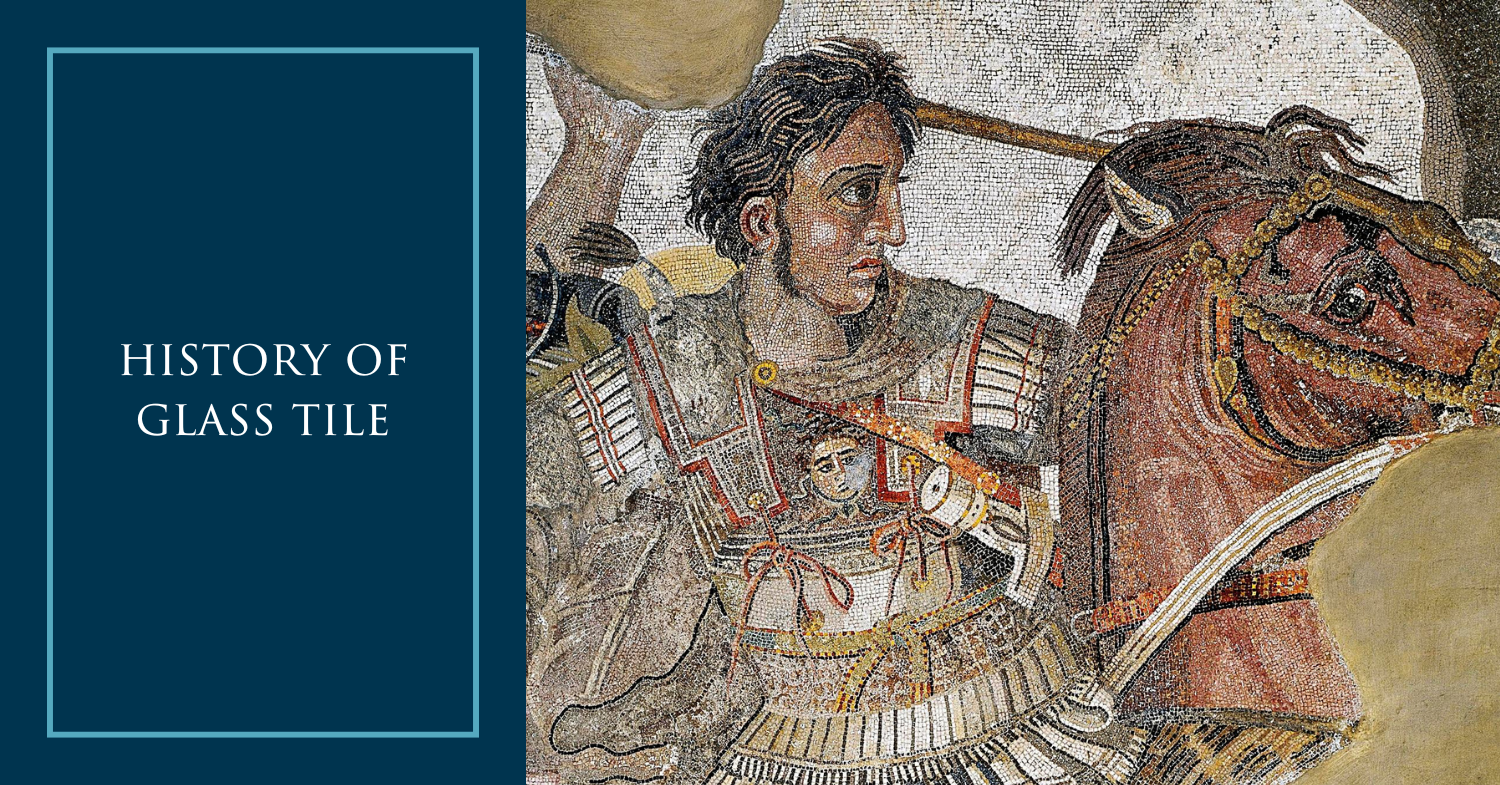Your Cart is Empty
Since 4,000 BC, tile has been used to decorate buildings. Often utilized for religious purposes, the history of glass tile has followed a long path before ending up in your bathroom and/or kitchen backsplash.

Tile has a rich history that stretches back thousands of years. The earliest known tile example dates to the Temple of Uruk in Mesopotamia, where tile mosaics were first constructed. By 200 BC, ancient Romans had adopted tile for decorative purposes and introduced "tesserae," small cubic tiles used to form detailed images.
From Britannica.com: Stone tesserae remained dominant in mosaics into Roman times, but between the 3rd and 1st centuries BC tesserae of "smalto" “smalti”, or colored glass, also began to be produced, cut from large slabs of glass that ranged from lightly tinted to opaque. These relatively fragile glass tesserae were used sparingly in floor mosaics to provide pure blues, reds, and greens that could not be found in the more durable natural stone; with the advent of wall mosaic between the 1st and 3rd centuries AD, however, glass tesserae of every hue were produced to constitute the major part of this decoration, stone being mainly reserved for floors. Glass was the major material for wall and vault mosaics of Early Christian and Byzantine churches, and marble and limestone tesserae were frequently used in the depiction of faces, woolen garments, rocks, and other objects that required a soft or rough appearance.

Saint Mark's Basilica
An important variety of glass tesserae, appearing first in Roman mosaics of the 4th century AD, were those made with gold and silver leaf. Thin plates of gold or silver were sandwiched between two slabs of molten glass, one thicker than the other, to produce a mirrorlike piece that was then cut into tesserae. These gold and silver tesserae were used in Roman and the earliest Christian mosaics simply to depict gold and silver objects; in later mosaics of the Early Christian period and in Byzantine mosaics, solid fields of gold tesserae formed the gold background that appeared in almost every decoration.
By the 4th century AD, Roman mosaics began to feature gold and silver tesserae, created by sandwiching thin plates of gold or silver between layers of molten glass. These tesserae added a brilliant, mirror-like shine and were often used in the depiction of gold and silver objects. As glass mosaic art evolved during the Early Christian and Byzantine periods, these gold tesserae formed the iconic gold backgrounds seen in many religious decorations.

Sainte Chapelle Cathedral in Paris
The popularity of glass tile decoration continued into the Middle Ages, with one of the most notable examples being St. Mark’s Basilica, or the "Church of Gold," in Venice. However, during the Gothic period (13th-14th centuries), tile mosaics began to lose favor as stained glass windows became the focal point of cathedral designs. By the mid-1400s, the Renaissance brought a shift toward more realistic painting styles, further diminishing the use of traditional stained glass.
Mosaic art saw a revival during the Victorian era (mid-1800s to early 1900s), with advancements in tile production resulting in higher quality and more consistent glass tiles. This era saw the rise of Art Nouveau, which incorporated stylized glass tiles inspired by nature into art and design. Louis Comfort Tiffany, a prominent American artist, introduced glass into interior design, particularly through his iconic stained glass windows.

Stained Glass by Louis Comfort Tiffany | Source: Wikimedia Commons
The mid-20th century saw a decline in glass tile's popularity as designers began favoring modern, synthesized materials. Despite this, glass mosaics continued to be used in public buildings and churches, though their residential use waned.
In 1992, Oceanside Glasstile reintroduced handcrafted cast glass tiles made from 86% recycled glass, helping to ignite a modern trend for glass tiles. Today, glass tile is a versatile and beautiful choice for interior design, with options ranging from sleek and contemporary to handmade works of art. Artists around the world continue to innovate, ushering in a new golden age for glass tile.
TOMMY BAHAMA Glass Tile Mosaics
This contemporary resurgence of glass tile combines sustainability, artistry, and timeless beauty, making it a favored option in modern design.
If you've enjoyed reading about the history of glass tile, make sure you visit our Glass Tile 101 page to learn all about the technical specifications, care & maintenance, and applications of this unique and exquisite material. We'll also show you some tips for designing with glass tile, and provide case studies on common issues. Jump into Glass Tile 101 and upgrade your tile expertise!

